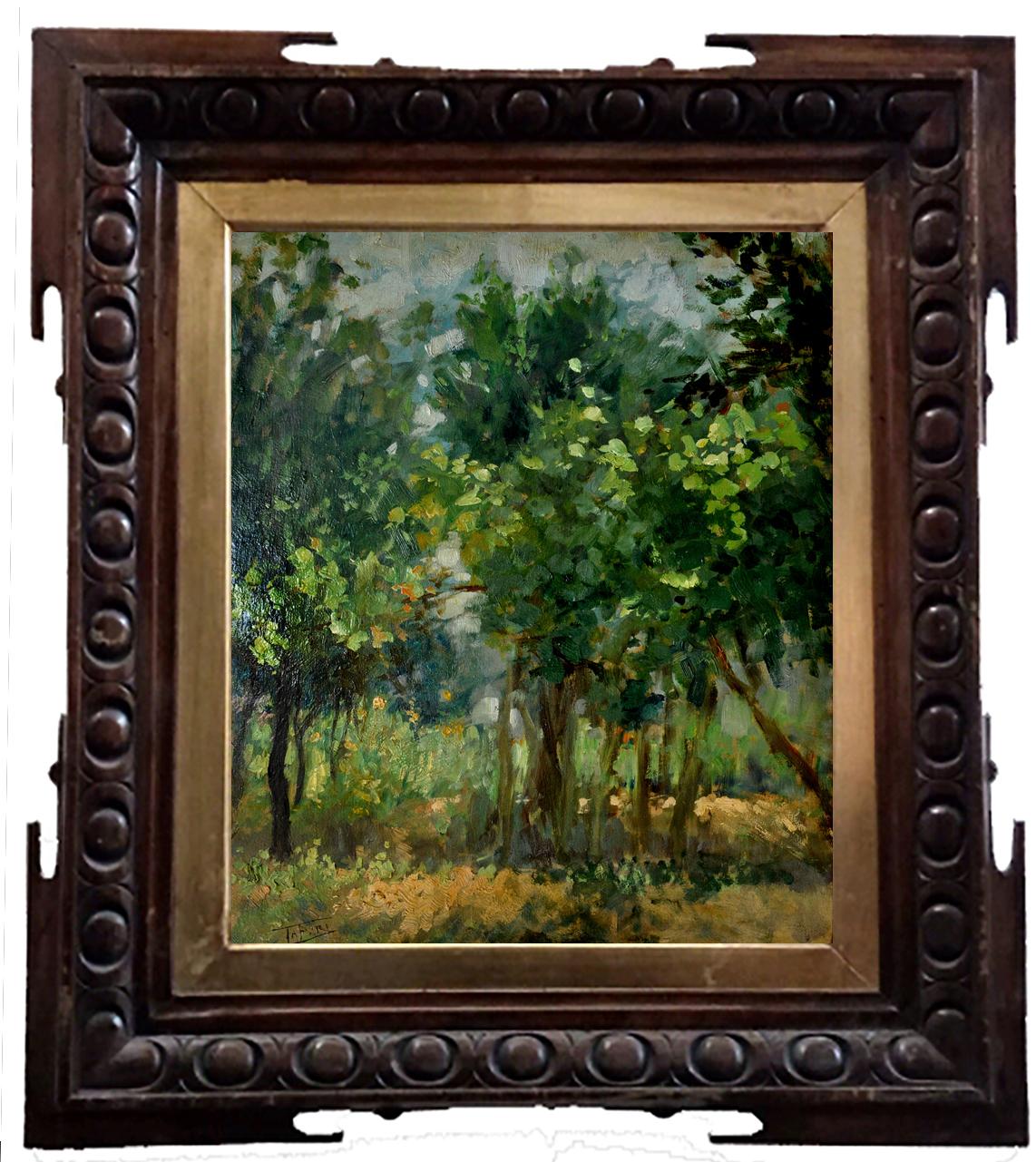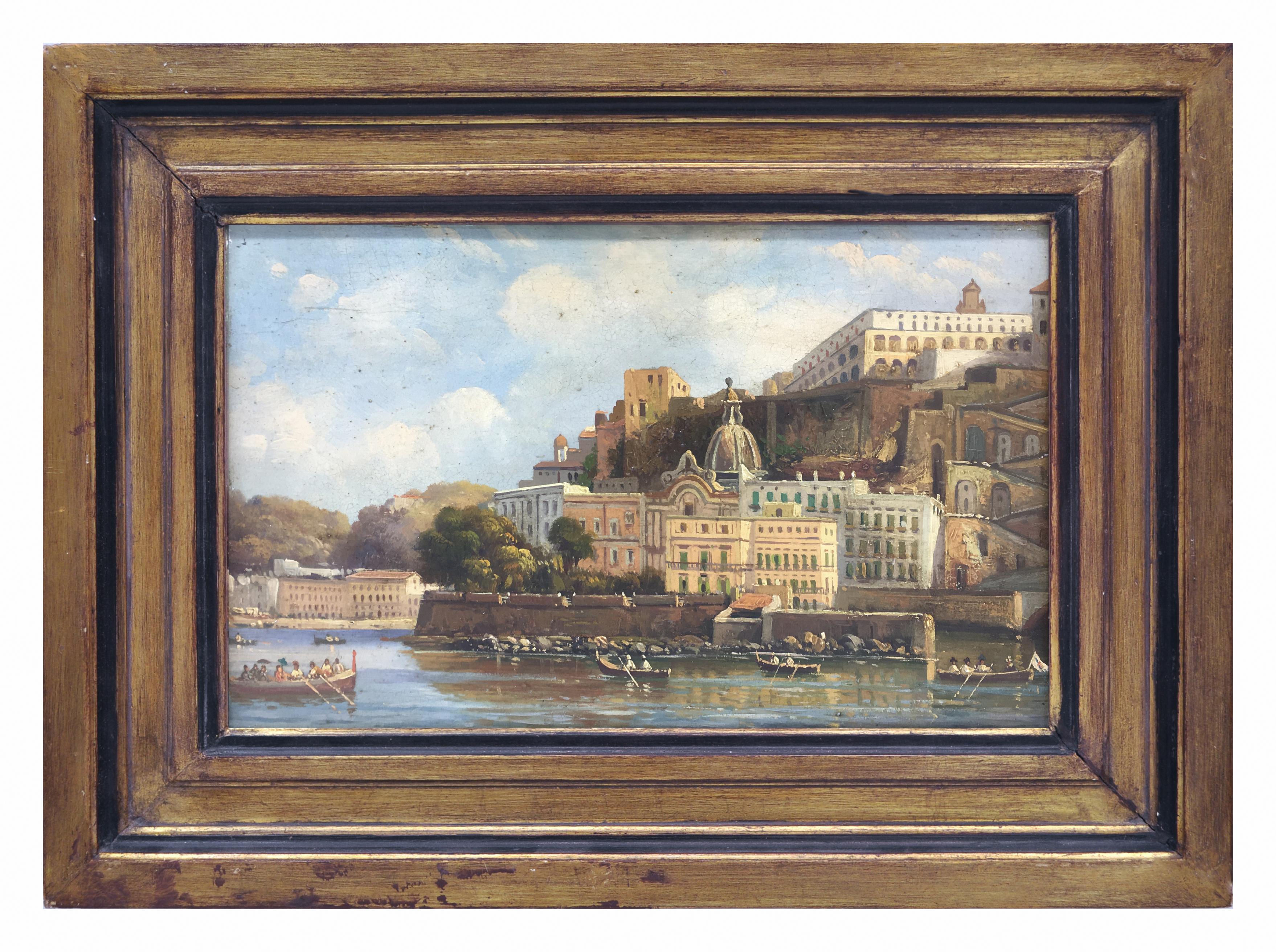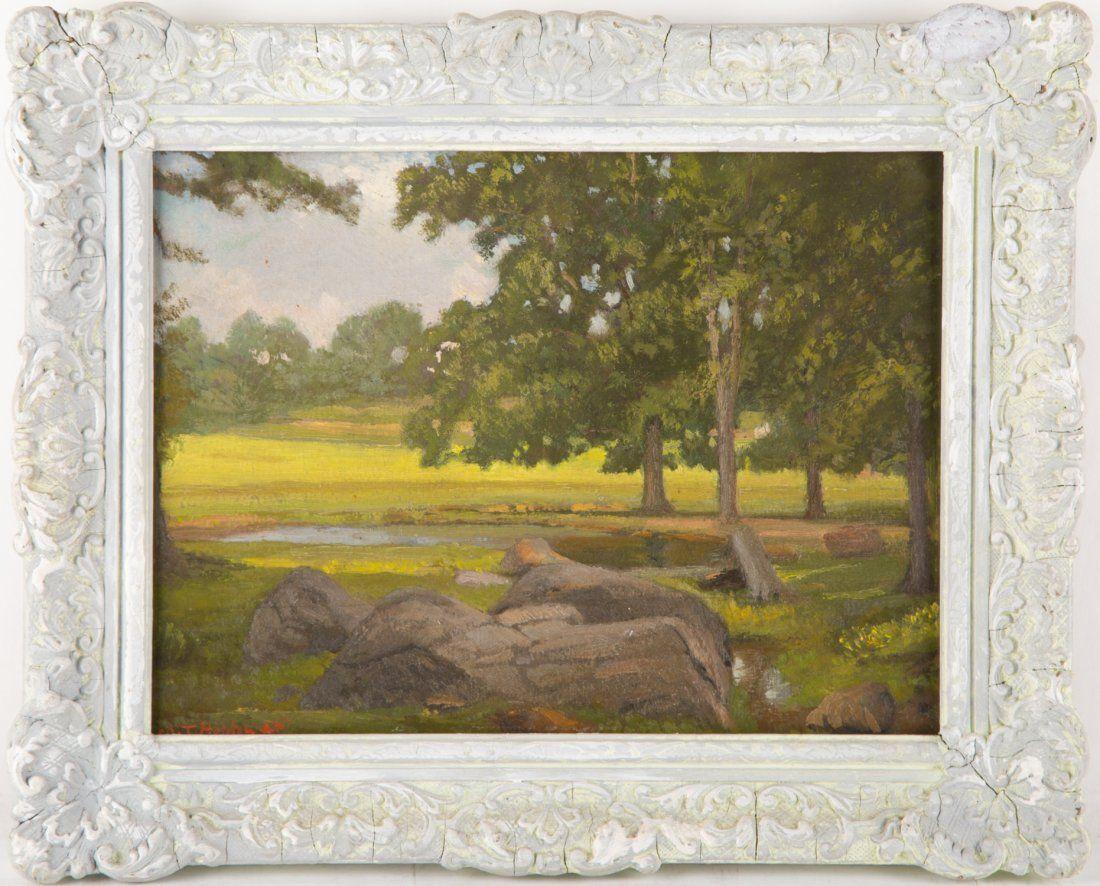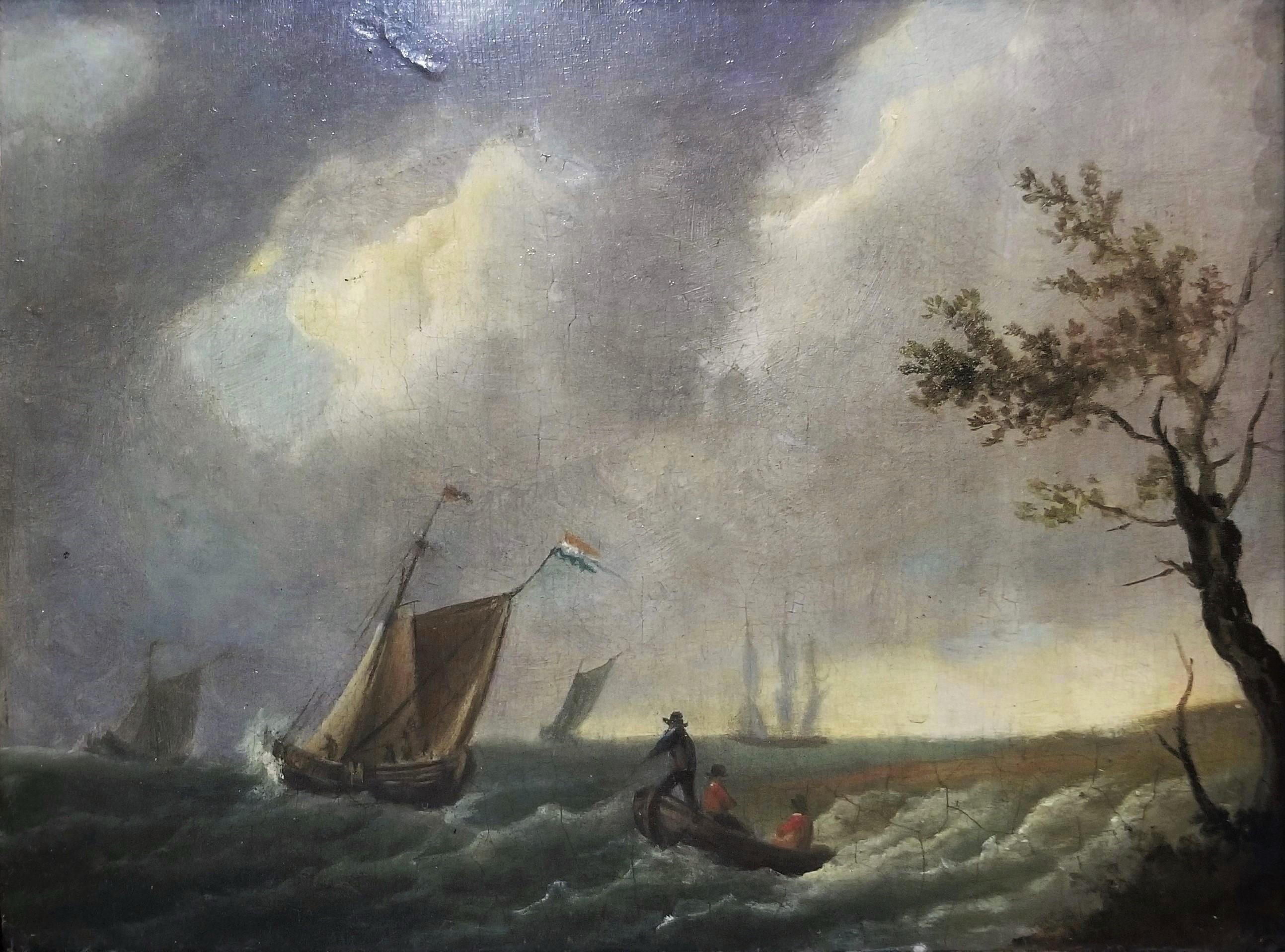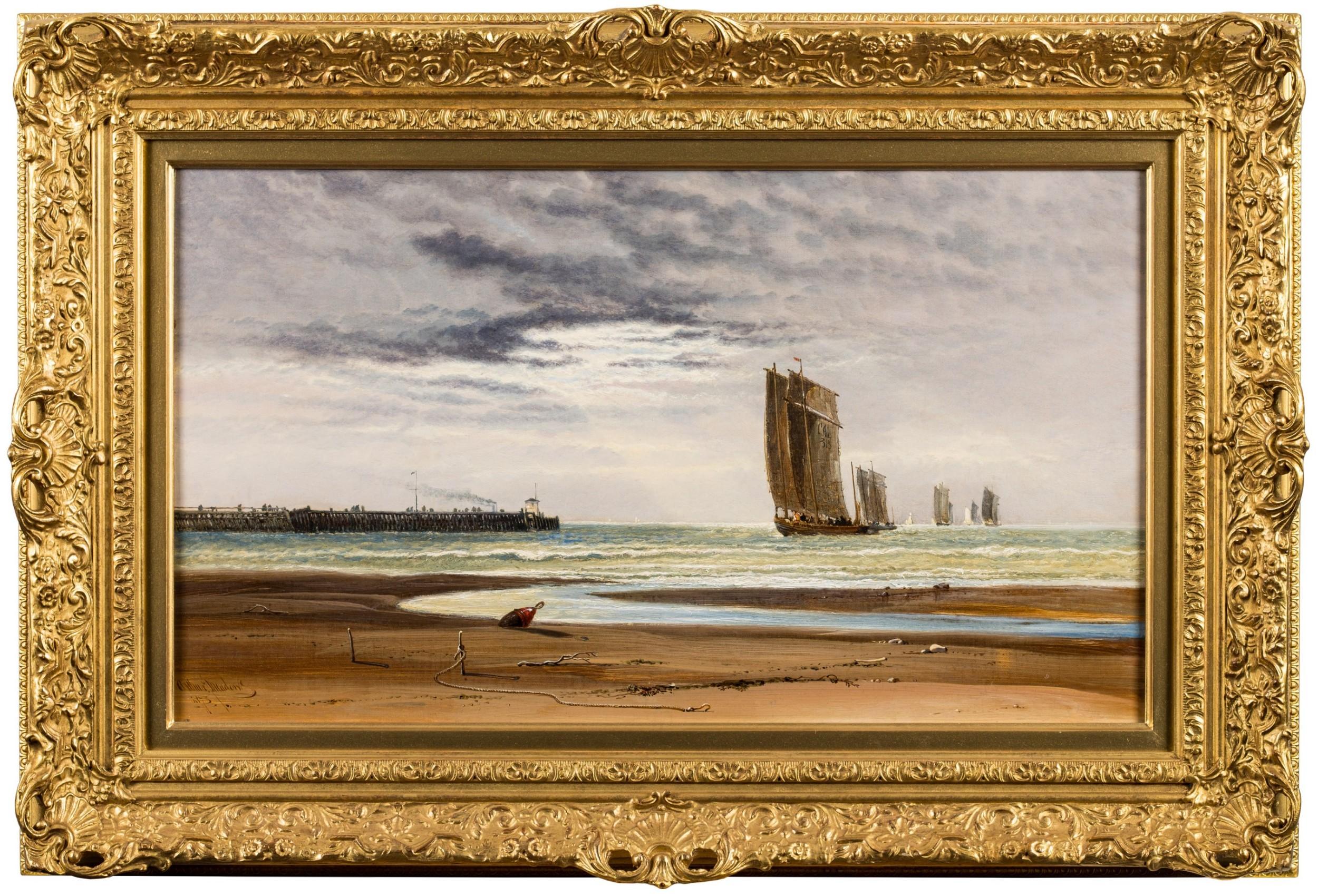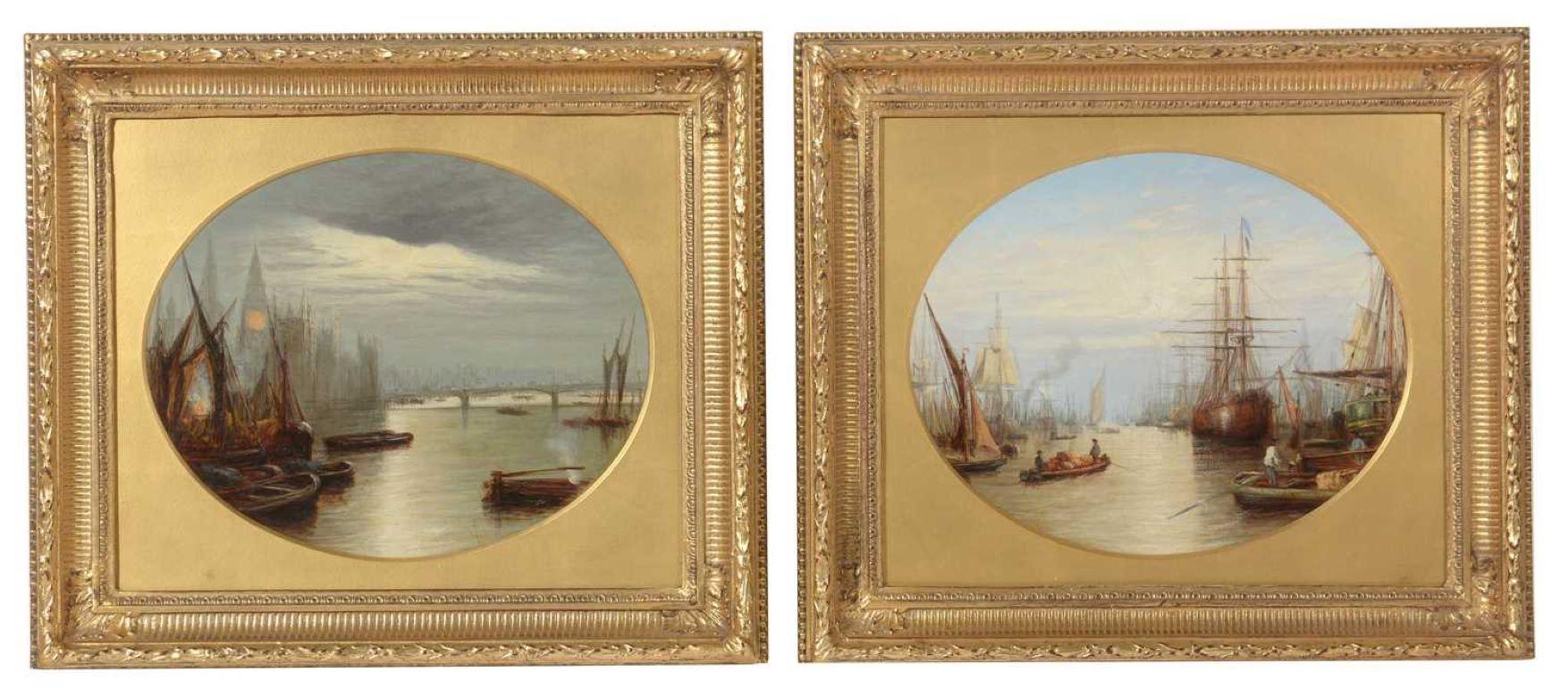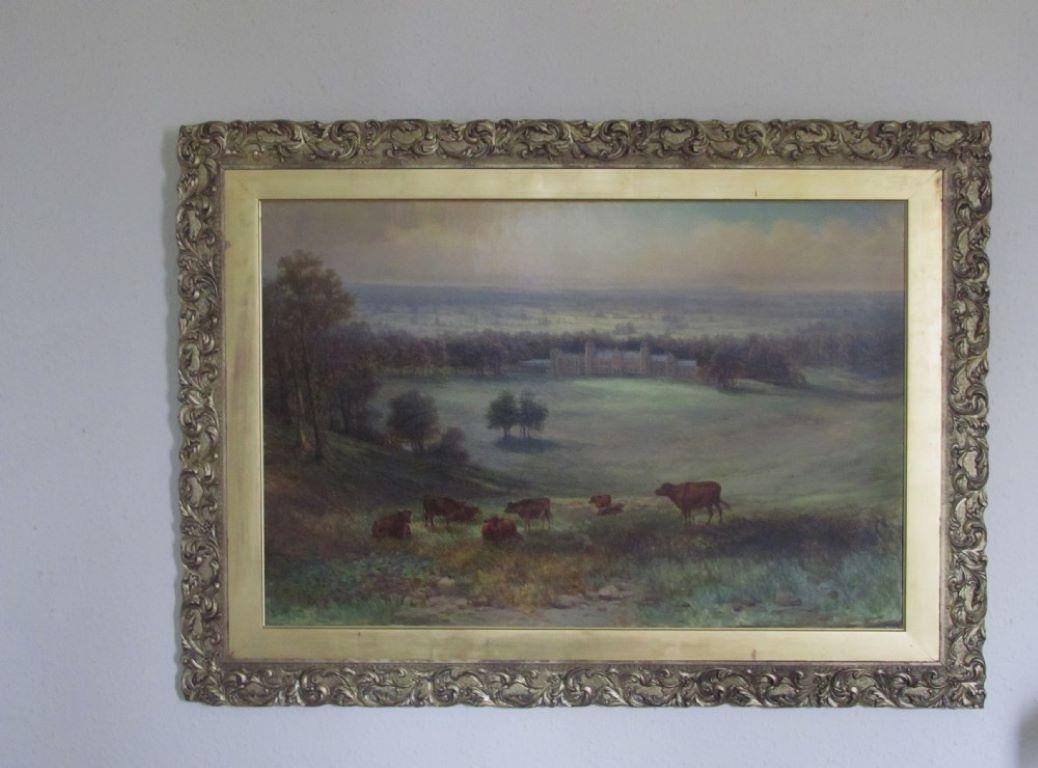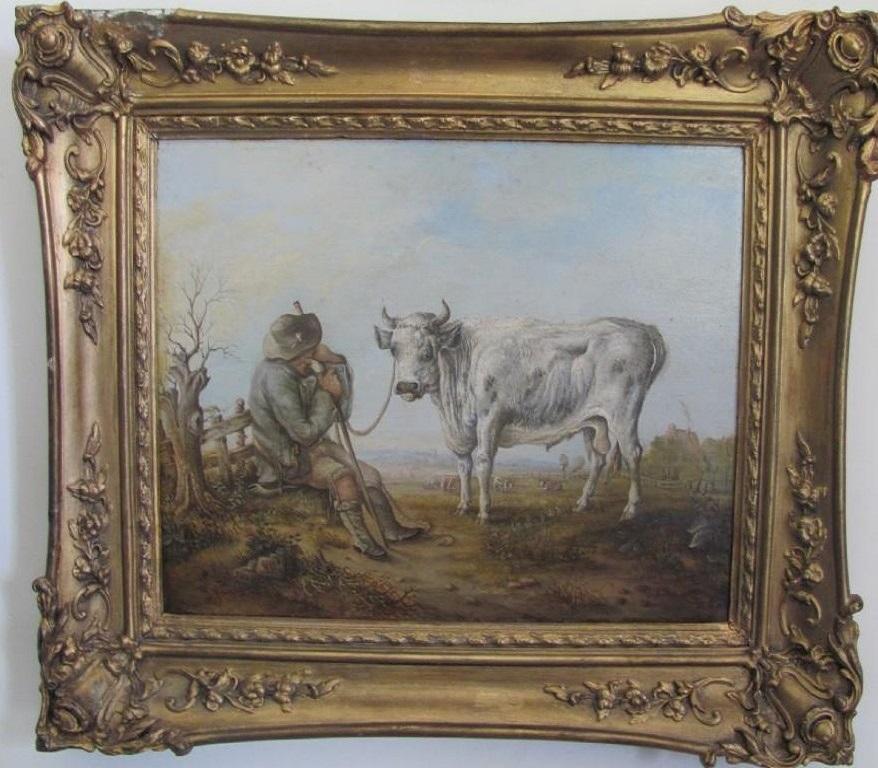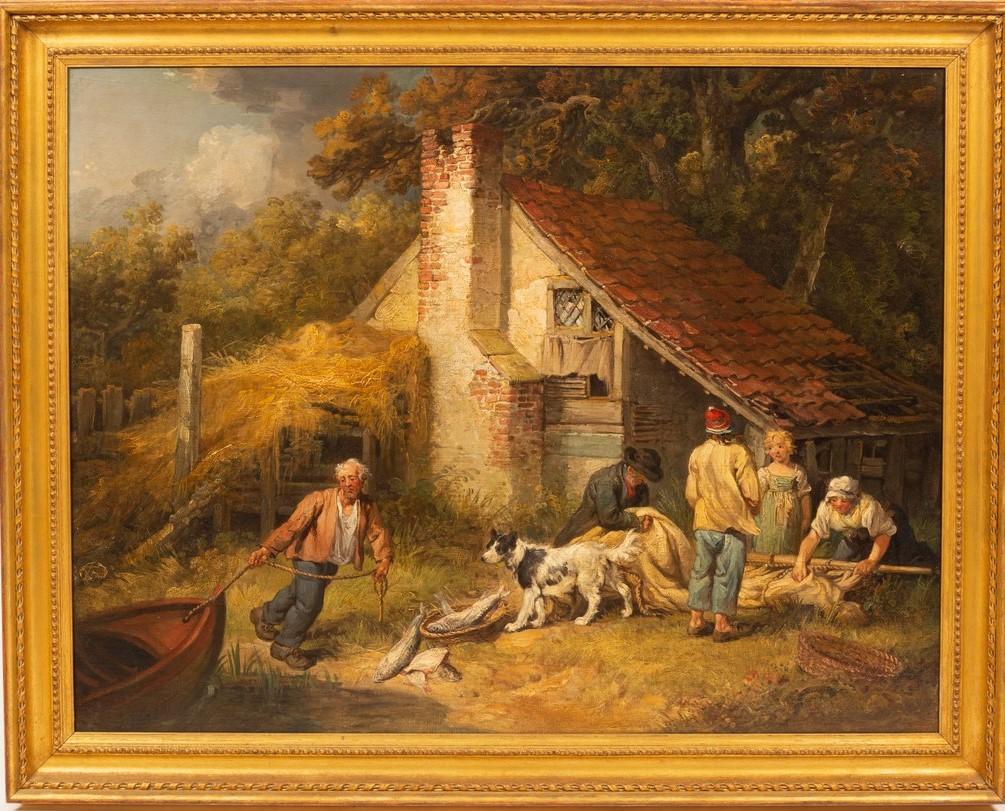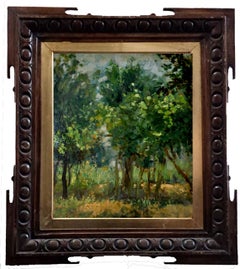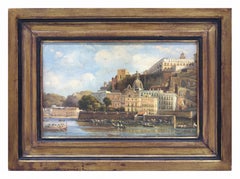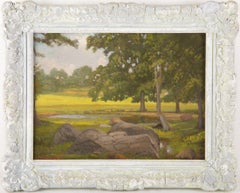
Outward Bound, The Clipper Ship Lightening, Seascape Oil Painting by Henry Scott
View Similar Items
1 of 11
Henry ScottOutward Bound, The Clipper Ship Lightening, Seascape Oil Painting by Henry Scottc1950
c1950
About the Item
- Creator:Henry Scott (1911-2005, British)
- Creation Year:c1950
- Dimensions:Height: 16 in (40.64 cm)Width: 24 in (60.96 cm)Depth: 4 in (10.16 cm)
- Medium:
- Movement & Style:
- Period:
- Condition:
- Gallery Location:Poole, GB
- Reference Number:1stDibs: LU117614213722
You May Also Like
- IN THE WOOD - Italian landscape oil on board painting, Raffaele TafuriLocated in Napoli, ITIN THE WOOD - Italian oil on board framed painting, Italy, xx sec, Raffaele Tafuri. External measurement cm.66x59 Raffaele Tafuri (1857-1929) was an I...Category
Early 1900s Old Masters Landscape Paintings
MaterialsOil, Board
- MARINE - Posillipo School - Italian Landscape Oil on Board PaintingBy Enrico CapuanoLocated in Napoli, ITMarine - Enrico Capuano Italia 2009 - Oil on board cm. 20x33Category
Early 2000s Old Masters Landscape Paintings
MaterialsOil, Board
- George Thompson Hobbs (1846-1929) Landscape Oil On Board "Summer "Located in New York, NYTitle: Summer Medium: Oil On Board Painting Size: 9 x 12inches Frame Size: 12 x 15inches Condition: This artwork is in good overall condition for its age. Signature: Signed Artist: ...Category
Late 19th Century Old Masters Landscape Paintings
MaterialsBoard, Oil
- Dutch Fishing Vessels in Storm /// Francis Swaine Maritime Seascape Antique ShipBy Francis SwaineLocated in Saint Augustine, FLArtist: Francis Swaine (English, 1725-1782) Title: "Dutch Fishing Vessels in Storm" *No signature found Circa: 1770 Medium: Original Oil Painting on wood panel Framing: Framed in a Louis XV style gold moulding Framed size: 10.63" x 12.63" Panel size (irregular margins): 6" x 7.75" Condition: One small restored spot upper left. Cosmetic wear to frame. In otherwise very good condition Notes: Provenance: private collection - London, England; acquired from art dealer Ernest Alden, London, England retaining his original gallery label on verso. Metal plaque inscribed "F. Swaine 1740-1782", (active dates), attached to frame bottom center. Ernest William Alden (1866-1947) was recorded in successive censuses, in 1881 as a picture mounter (card maker), age 14, living at 9 Bloomsbury St, with several other members of his family also given as picture mounters, including his father, James; in 1891 as a picture frame mounter with his father and family at 208 Shaftesbury Avenue; in 1901 as a photographer and picture dealer at 39 King’s Road, Chelsea; and in 1911 again at 39 King’s Road but the census form is damaged. His listing in trade directories, initially as picture mount cutter, changed to picture framemaker from 1904, soon after he set up in the King’s Road. He advertised his large stock of second-hand swept and other frames, claiming to have been established in 1893 (The Year’s Art 1913). Alden died in Chelsea in 1947, leaving effects worth £5,011, with probate granted to his widow Lily Alden and to Marjorie Frances Alden. Two of his younger brothers, Henry Cyril Alden (1871-1939) and James Preston Alden (1876-1960), were also active as picture framemakers. - National Portrait Gallery, London, England. Biography: Francis Swaine (1725–1782) was a British marine painter. He was born in 1725, and christened on 7 October of that year at St Dunstan's, Stepney, London. His parents were named Francis Swaine and Ann Joel. In 1735 the elder Francis Swaine, the marine painter's father, applied in writing to the Commissioners of His Majesty's Navy for employment as a Navy Messenger, in succession to Mr William Wyatt. He mentions that he had served "upwards of twenty eight years" in the Navy, and that his father had died Purser of the Royal Katherine. He mentions also that he had carried out "little labours in drawing", and that he at that time had five small children. The first-born of these children was the Francis Swaine who became the marine painter. The elder Swaine was duly employed as a Navy Messenger. He served for 20 years and died on 10 October 1755, aged 64. Swaine is said to have been influenced by the style of Van de Velde. There is no clear evidence of this alleged influence. The suggestion that Swaine may have been a pupil of Charles Brooking...Category
1770s Old Masters Landscape Paintings
MaterialsPaint, Oil, Panel, Wood Panel, Board
- Early oil depicting the Great Fire of LondonLocated in London, GBThe Great Fire of London in September 1666 was one of the greatest disasters in the city’s history. The City, with its wooden houses crowded together in narrow streets, was a natural fire risk, and predictions that London would burn down became a shocking reality. The fire began in a bakery in Pudding Lane, an area near the Thames teeming with warehouses and shops full of flammable materials, such as timber, oil, coal, pitch and turpentine. Inevitably the fire spread rapidly from this area into the City. Our painting depicts the impact of the fire on those who were caught in it and creates a very dramatic impression of what the fire was like. Closer inspection reveals a scene of chaos and panic with people running out of the gates. It shows Cripplegate in the north of the City, with St Giles without Cripplegate to its left, in flames (on the site of the present day Barbican). The painting probably represents the fire on the night of Tuesday 4 September, when four-fifths of the City was burning at once, including St Paul's Cathedral. Old St Paul’s can be seen to the right of the canvas, the medieval church with its thick stone walls, was considered a place of safety, but the building was covered in wooden scaffolding as it was in the midst of being restored by the then little known architect, Christopher Wren and caught fire. Our painting seems to depict a specific moment on the Tuesday night when the lead on St Paul’s caught fire and, as the diarist John Evelyn described: ‘the stones of Paul’s flew like grenades, the melting lead running down the streets in a stream and the very pavements glowing with the firey redness, so as no horse, nor man, was able to tread on them.’ Although the loss of life was minimal, some accounts record only sixteen perished, the magnitude of the property loss was shocking – some four hundred and thirty acres, about eighty per cent of the City proper was destroyed, including over thirteen thousand houses, eighty-nine churches, and fifty-two Guild Halls. Thousands were homeless and financially ruined. The Great Fire, and the subsequent fire of 1676, which destroyed over six hundred houses south of the Thames, changed the appearance of London forever. The one constructive outcome of the Great Fire was that the plague, which had devastated the population of London since 1665, diminished greatly, due to the mass death of the plague-carrying rats in the blaze. The fire was widely reported in eyewitness accounts, newspapers, letters and diaries. Samuel Pepys recorded climbing the steeple of Barking Church from which he viewed the destroyed City: ‘the saddest sight of desolation that I ever saw.’ There was an official enquiry into the causes of the fire, petitions to the King and Lord Mayor to rebuild, new legislation and building Acts. Naturally, the fire became a dramatic and extremely popular subject for painters and engravers. A group of works relatively closely related to the present picture have been traditionally ascribed to Jan Griffier...Category
17th Century Old Masters Landscape Paintings
MaterialsOil, Canvas
- Italian Landscape with Jack Players, a painting by Gaspard Dughet (1615 - 1675)By Gaspard DughetLocated in PARIS, FRHere Gaspard Dughet offers us an idyllic vision of the Roman countryside. The stages follow one another in a perfectly structured composition, revealing here a lake, there travellers walking along, gradually leading our eye to the blue horizon. But behind its classical composition, this landscape is particularly interesting because of three anthropomorphic details that the artist has hidden, opening the way to a radically different interpretation... 1. Gaspard Dughet, a landscape artist in the light of Poussin Gaspard Dughet was born on June 4th, 1615 in Rome where his father, of French origin, was a pastry cook. He was probably named Gaspard in honour of his godfather Baron Gaspard de Morant, who was, or may have been, his father's employer. His older sister Jeanne married the painter Nicolas Poussin (1594 - 1655) on September 1st, 1630. The young Gaspard was apprenticed with his brother-in-law at the beginning of 1631, which led his entourage to name him Gaspard Poussin. The first preserved works of the painter date from the years 1633-1634 and were painted in Poussin’s studio. Around 1635, Gaspard Dughet became emancipated and began to frequent the Bamboccianti circle. In 1636, he became friends with the painter Jean Miel (1599 - 1656), but also with Pier Francesco Mola (1612 - 1666) and Pietro da Cortona (1596 - 1669). This was also the time of his first trips throughout Italy. The painter, although of French origin, appears never to have visited France. In 1646 he settled permanently in Rome. A recognized painter with a solid book of orders, he remained faithful to landscape painting throughout his life, alternating between cabinet paintings and large decorative commissions, using both oil and fresco. Nailed to his bed by rheumatic fever at the age of 58, he died on May 25, 1675. 2. Discovering an idealized landscape Beyond a relatively dark foreground that takes us into the landscape, we discover a vast bluish horizon: a plateau surrounded by deep ravines advances to the right, overhanging an expanse of water that sparkles below. A road winds through a mountainous mass as if leading us to the fortress that crowns it; another town appears in the distance at the foot of three conical mountains. The composition is rigorous, mineral, and structured by geometric volumes. The various stages in the landscape lead one to the next attracting the eye towards the horizon located in the middle of the canvas. The general impression is that of a welcoming and serene nature. In many places the paint layer has shrunk, or become transparent, revealing the dark red preparation with which the canvas was covered and accentuating the contrasts. Human presence is limited to three jack players, leaning against a mound in the foreground. Their long garments, which may evoke Roman togas, contribute to the timelessness of the scene. Close examination of the canvas reveals two other travellers on the path winding between the rocks. Made tiny by the distance, their introduction in the middle register, typical of Dughet's art, lengthens the perspective. While it is difficult to date the work of a painter who devoted his entire life to the representation of landscapes, it is certain that this painting is a work from his later years. The trees that occupied the foreground of his youthful compositions have been relegated to the sides, a stretch of water separates us from the arid mountains counterbalanced by two trees represented on the opposite bank. The introduction of this stretch of water in the middle of the landscape betrays the influence of the Bolognese and in particular of the Dominiquin (1581 - 1641) A number of similarities with a drawing in the British Museum might suggest a date around 1656-1657, since, according to Marie-Nicole Boisclair , it has been compared with the Prado's Landscape with the Repentant Magdalene, painted at that period. 3. Three amazing anthropomorphic details While some late Renaissance landscapes offer a radical double reading, allowing one to see both a face or a human body behind the representation of a landscape, it seems interesting to us to hypothesize that Gaspard Dughet had fun here by slipping in a few details that, taken in isolation, evoke human or animal figures. We will give three examples, looking closely at a cloud, the trunk of a broken tree and the top of a cliff. The main cloud could thus evoke a Christ-like face or that of an antique god...Category
1650s Old Masters Landscape Paintings
MaterialsOil
Recently Viewed
View AllMore Ways To Browse
Trade Winds
Old Masters Maritime
Dawson Montague
F Scott Oil Painting
Henry Heading
Indistinctly Signed
Cypress Tree
Maritime Signs
Painted Globe Light
Panoramic Paintings
Friend And Company
Italian Coast Paintings
Mexican Earth
Art California Landscapes Ocean
Oil Painting Christian
Egypt Landscape
Hudson Valley Landscape
Landscape Ruins
